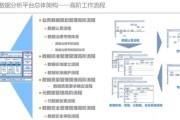标题:大数据平台技术架构创新:加速数据处理和提升系统性能的关键因素大数据平台技术架构创新在当前信息时代中扮演着至关重要的角色。创新的架构设计可以加速数...
2024-05-23 997 大数据平台技术架构的数据处理层 大数据平台架构图 大数据平台的组织形式 大数据创新应用前景
In the landscape of modern data management, Big Data platforms play a pivotal role in handling vast amounts of data efficiently. Understanding the functional architecture of these platforms is essential for leveraging their capabilities effectively. Let's delve into the key components and functionalities that constitute the architecture of a Big Data platform:
Big Data platforms start by ingesting data from various sources such as databases, files, streams, sensors, and more. This process involves:

Once the data is ingested, it needs to be stored efficiently. Big Data platforms employ different storage mechanisms, including:
The heart of a Big Data platform lies in its processing capabilities, which involve:
Efficient allocation and management of computing resources are crucial for optimal performance. This includes:
Big Data platforms must adhere to stringent governance and security standards, encompassing:
The ultimate goal of a Big Data platform is to derive actionable insights from the data. This involves:
Communicating insights effectively is vital for decisionmaking. This includes:
Big Data platforms often integrate with various tools and systems to enhance their capabilities, including:
Understanding the functional architecture of Big Data platforms is essential for organizations aiming to harness the power of data effectively. By comprehending the roles and interactions of each component within the architecture, businesses can design, deploy, and manage scalable and efficient data processing systems, enabling them to derive valuable insights and drive informed decisionmaking.
This comprehensive overview of the functional architecture of Big Data platforms serves as a guide for organizations embarking on their journey towards datadriven excellence.
标签: 大数据平台架构主要分为 大数据平台的通用架构 大数据平台技术架构的数据处理层 大数据平台架构的六个层次
相关文章

标题:大数据平台技术架构创新:加速数据处理和提升系统性能的关键因素大数据平台技术架构创新在当前信息时代中扮演着至关重要的角色。创新的架构设计可以加速数...
2024-05-23 997 大数据平台技术架构的数据处理层 大数据平台架构图 大数据平台的组织形式 大数据创新应用前景

标题:大数据平台运行组织管理及其重要性随着大数据时代的到来,大数据平台成为了企业数据分析和应用的重要工具。而在大数据平台建设完成后,如何合理地进行运行...
2024-04-22 714 大数据平台架构主要分为 大数据集群管理方案 大数据平台组件 大数据服务与管理 大数据团队组织架构